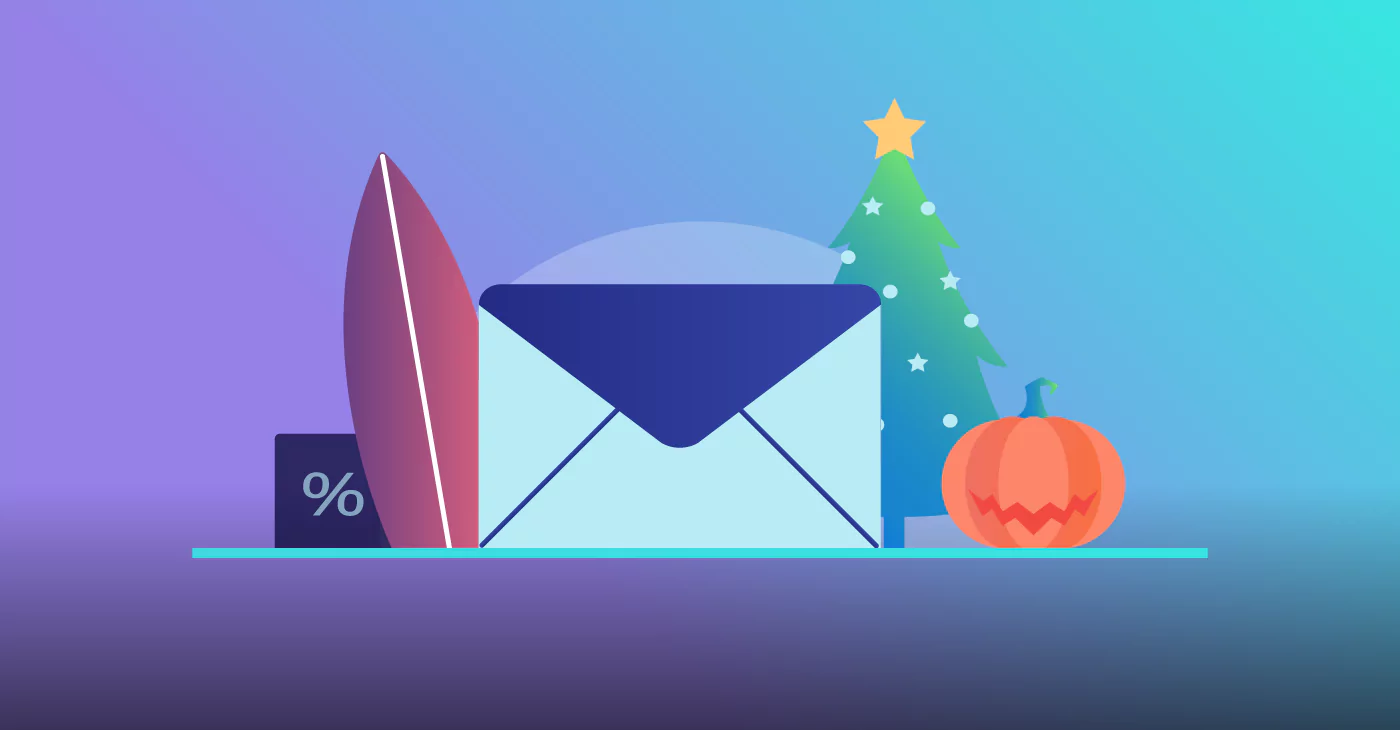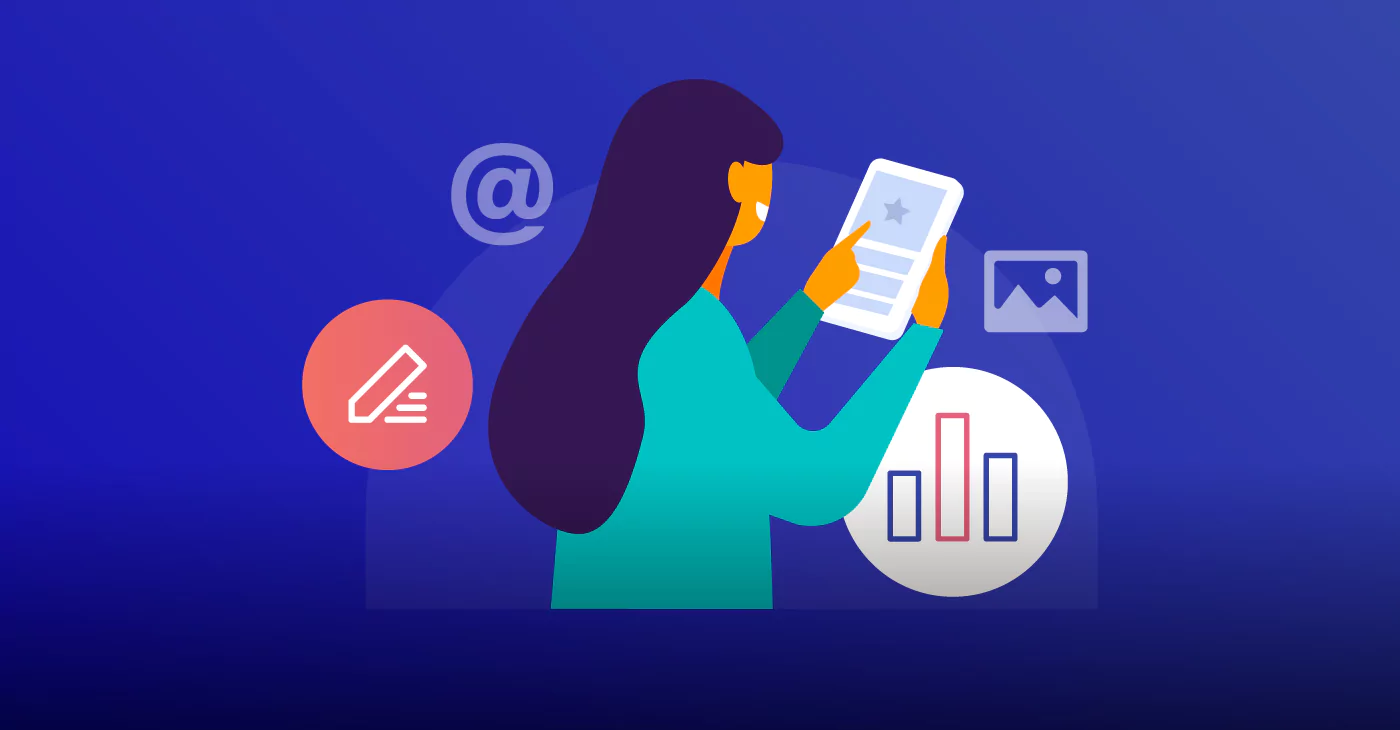How Can Audience Engagement Improve Email Deliverability?
September 1, 2022 6 min read

Every successful business also has solid email deliverability. It’s not without effort. They most likely have a team of email marketers building strategies that ensure successful email campaigns without any throttling, bulking, bouncing, or spamming.
Simply put, email deliverability is the ability to deliver emails to recipients’ primary inboxes. Sounds easy enough, but there are multiple factors that can negatively affect it. Sending an email without custom authentication, an unsubscription option, or seeing a lack of engagement are just a few of those examples.
Today we’ll dive into the correlation between audience engagement and email deliverability, as well as some best practices to ensure your deliverability stays on point.
What is Email Engagement, and How Does it Help Email Deliverability?
Email engagement is a measurement of your subscribers’ interaction with your emails. Measuring email engagement can only be done by observing specific actions, such as:
- Open rate
- Click-through rate
- Click map
- Unsubscription rate
- Website traffic rate
These actions function as email metrics, allowing you to properly measure your email engagement and locate where improvements are needed.
Open Rate
A metric indicating the percentage of emails opened from the total delivered. The average email open rate depends on the industry, but this percentage indicates the number of people interested in your content.
Tracking the open rate is possible through bulk email service providers. A bulk email service is software used to send a large number of email campaigns to a list of recipients. This service can both be self-hosted or provided by vendors.
To calculate the email open rate yourself, divide the number of emails opened by the number of emails delivered, and multiply it by a hundred to get your percentage.
Your email subject line plays a large role in determining whether or not your emails get opened. Make sure your subject lines are engaging and descriptive.
Click-Through Rate
CTR is a metric indicating the number of clicks on links present in the emails delivered. This metric is vital to verify recipients’ interest in the content you share in your email campaigns. Each click indicates an interest, allowing email marketers to adjust their marketing strategies accordingly and ensure customer satisfaction and build the next lead funnel. Without tracking CTR, you are unable to identify the impact your email campaign had on your audience.
With that in mind, it is clear how CTR aids in improving marketing methods and approaches. Measuring CTR also allows for comparative measurement of two different campaigns and adapting the next one for improvements.
To calculate the email click-through rate, divide the number of link clicks by the number of emails sent, then multiply by a hundred to get the percentage.
Click Map
Measures the number of clicks on each link present in the delivered email. It is a part of the statistics report that helps identify the performance of each link and measure the interest level of your audience. That ultimately aids your marketing team and, similarly to CTR, provides information for the improvement of any future marketing strategies.
Analyzing the click map can also aid in determining which subscribers were interested in which specific topic, allowing you to send personalized follow-up emails to satisfy their interest further.
Unsubscribe Rate
Measures the percentage of users who have decided to opt-out from your mailing list. A high unsubscription rate notifies email service providers and can result in negative consequences.
Since not all users’ interests can be met, the expected percentage of unsubscription rate is considered 0.5%, with 0.2% and lower being good. If the number is higher, then a marketing strategy has to be improved. The usual case for unsubscription is either irrelevant information or irritating frequency of emails delivered. This, however, does not apply to either a new organization or a new mailing list since, during those cases, the relationship with the audience is being developed. Monitoring and understanding the unsubscription rate and reason are helpful.
To calculate the unsubscription rate percentage, divide the unsubscribers by the number of successfully delivered emails, then multiply it by a hundred.
Best Practices and Tips to Improve Email Engagement
Email marketing is over 30 years old. In the beginning, Email Service Providers, also known as ESPs, such as Google, Yahoo, and Outlook, were mainly focused on spam complaints and email bounces.
Since then, advancements have been made. Email marketing has become the most popular communication method, and therefore Email Service Providers have adjusted their methods for determining email deliverability. Today, there are more determining metrics than just spam complaints and email bounce rates.
Since it is data-centric, email engagement is the most critical factor determining successful email deliverability. Email Service Providers’ algorithms closely observe email deliverability, and if you have successful engagement, you are considered a credible sender.
The following practices, alongside email deliverability tips, will help you improve email engagement and increase your email deliverability rate.
Understanding the Engagement Cycle
The engagement cycle is the progression of your recipients’ interactions with the delivered emails. Based on your recipients’ interactions, the cycle should consist of five sections:
- Actively engaged (0-30 days since last interaction)
- Recently engaged (30-90 days)
- Unengaged (3-6 months)
- Re-engagement needed (6-12 months)
- Inactive (12+ months)
Understanding the engagement cycle can help you determine how often your customers visit and interact with your website or make a purchase of your product or service. The engagement cycle varies by industry and is not a one-size-fits-all. But, it can help you identify necessary statistics and implement required improvements.
To improve the email engagement based on your engagement cycle, consider the following options:
- Host giveaways
- Have loyalty programs
- Have exclusive deals or discounts
- Celebrate users’ birthdays and anniversaries
It can make a significant difference to make your user feel special by either offering exclusive deals and discounts, rewarding them through subscriber-only events, or celebrating milestones.
Re-Engage Inactive Recipients
It isn’t uncommon for a percentage of subscribers to not engage with your emails for several months. Some users either lose interest or no longer use the email address you’re emailing to. In an effort to gain the attention of subscribers who have lost interest, a re-engagement email campaign will prove useful.
A re-engagement campaign (also called a win-back campaign) does just that – it targets inactive subscribers with the aim of winning them back. However, before targeting a passive subscriber with a re-engagement campaign, you need to understand what caused them to disengage in the first place. Usually, the reasons are one of the following:
- You email too frequently or too sparingly
- Your email content is repetitive or irrelevant
- You’ve sent them clickbait email content
- Your email design is poor or lacking
For best results, we recommend 30 to 90 days of inactivity before targeting subscribers with re-engagement initiatives. Ensure your email includes clear branding, so recipients know exactly who the email is from. Make it personalized and include relevant incentives. Also, make sure to include an option for the recipient to unsubscribe.
Ask the Right Questions Regarding Engagement
Make sure you answer the following questions, as you’ll obtain a better understanding of what you need to do to manage your campaigns better:
- How did you get your subscribers’ contact information? How can that information be useful to improve email engagement?
- What devices are your subscribers using to view your emails? How does the design look for them? How can it be improved for clearer communication and brand visibility?
- What are the actions your subscribers are taking after your email? How can you get them to do what your email sequences aim for them to do?
- What kinds of emails generate email engagement? Is your email marketing optimized by the best practices to ensure better email engagement?
This is called the engaged approach, where you focus your attention on all available pieces of information to analyze and improve email engagement and ensure customer satisfaction.
Conclusion
Email Service Providers evaluate email senders in a holistic and data-centric manner. This means there is a larger focus on email deliverability and engagement than ever before, and it includes factors such as open rate, click-through rate, unsubscribes, and the amount of time your emails are left unopened or opened.
If you want to ensure positive email deliverability and audience engagement, make sure you evaluate all of these email metrics and regularly review and adjust your campaigns with them in mind. Good luck!






